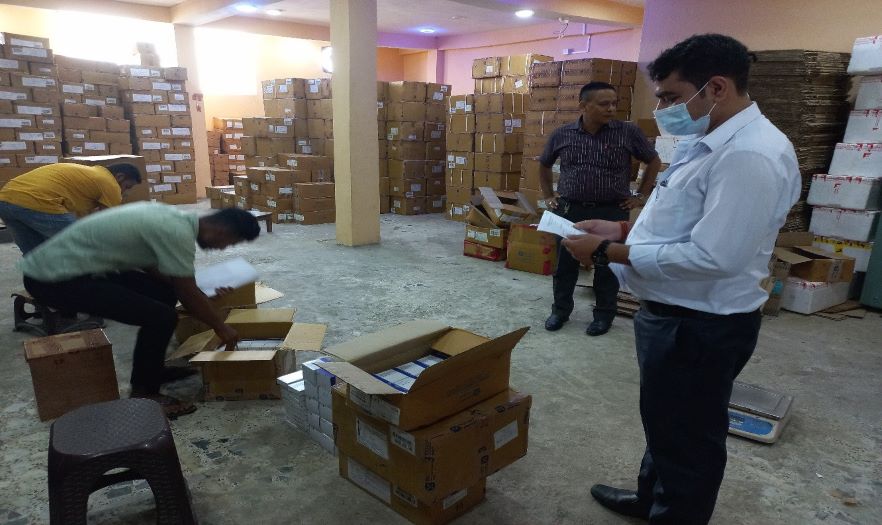Nepal Draws on Uganda’s Good Storage and Distribution Practices for Medical Products
Nepal’s Department of Drug Administration (DDA) is introducing Good Storage and Distribution Practices (GSDP) for its medicine and medical products in the country. The practices, developed with support from USAID MTaPS, draw on World Health Organization guidelines and integrate an indicator-based electronic inspection tool that was implemented successfully in Uganda’s supply chain management under a previous USAID-funded project.
To aid with the technology and knowledge transfer from Uganda to Nepal, MTaPS organized for a regulatory officer from the Uganda National Drug Authority to train Nepal’s staff from DDA and the National Medicine Laboratory, leveraging Uganda’s progress in the GSDP area and fostering collaboration between the two regulatory authorities and the opportunity for further learning from each other. Although Nepal has around 4,800 wholesalers compared with around 700 in Uganda, Uganda is further along in terms of regulations and implementation of GSDP.

Dr. Brian Sekayombya, principal regulatory officer of medicines, Uganda National Drug Authority, training Nepal’s regulatory staff on storage and distribution practices for medical products. Photo credit: Prabin Tamang, MTaPS Nepal
Following the training, the participants tested the inspection tool at select pharmaceutical wholesalers in the Kathmandu area for hands-on practice, while sensitizing the wholesalers on the need and the process for GSDP inspection—an exercise that raised awareness and built the capacity of all involved stakeholders on the storage practices so medical products on the market can be ensured of quality, safety, and efficacy.

Mr. Binamra Rai, technical lead, teaching the participants to download the inspection tool on their phones and demonstrating its features. Photo credit: Prabin Tamang
“The GSDP guidelines need to be implemented to ensure the quality and safety of products at the wholesalers/importers and to bring the standard to the international level. We all should update ourselves with time and can achieve that by working together.” —Mr. Bharat Bhattarai, Director General, Department of Drug Administration

Inspection at a wholesaler pharmaceutical company as part of the training. Photo credit: MTaPS Nepal